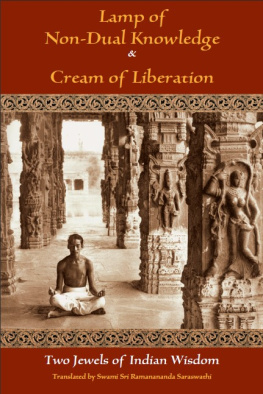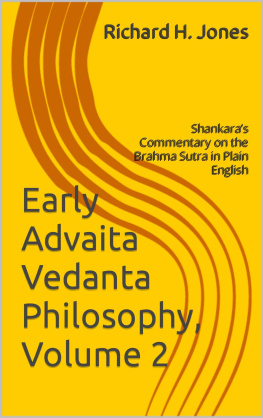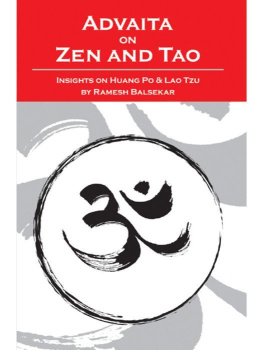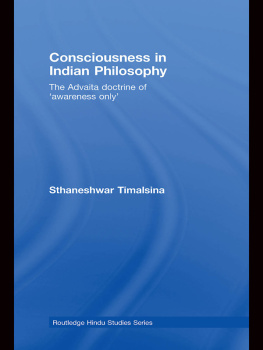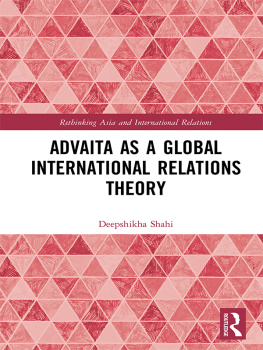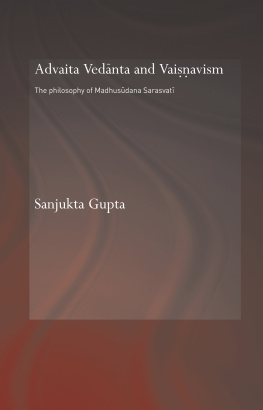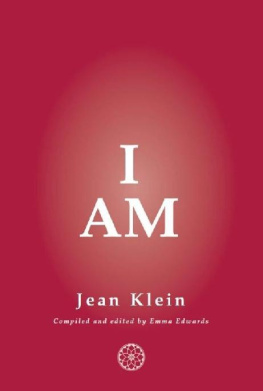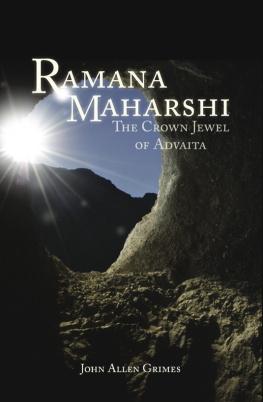Advaita Ācārya - The fading light of Advaita Acarya: three hagiographies
Here you can read online Advaita Ācārya - The fading light of Advaita Acarya: three hagiographies full text of the book (entire story) in english for free. Download pdf and epub, get meaning, cover and reviews about this ebook. City: USA;Oxford;New York, year: 2011, publisher: Oxford University Press, genre: Religion. Description of the work, (preface) as well as reviews are available. Best literature library LitArk.com created for fans of good reading and offers a wide selection of genres:
Romance novel
Science fiction
Adventure
Detective
Science
History
Home and family
Prose
Art
Politics
Computer
Non-fiction
Religion
Business
Children
Humor
Choose a favorite category and find really read worthwhile books. Enjoy immersion in the world of imagination, feel the emotions of the characters or learn something new for yourself, make an fascinating discovery.

- Book:The fading light of Advaita Acarya: three hagiographies
- Author:
- Publisher:Oxford University Press
- Genre:
- Year:2011
- City:USA;Oxford;New York
- Rating:3 / 5
- Favourites:Add to favourites
- Your mark:
- 60
- 1
- 2
- 3
- 4
- 5
The fading light of Advaita Acarya: three hagiographies: summary, description and annotation
We offer to read an annotation, description, summary or preface (depends on what the author of the book "The fading light of Advaita Acarya: three hagiographies" wrote himself). If you haven't found the necessary information about the book — write in the comments, we will try to find it.
The fading light of Advaita Acarya: three hagiographies — read online for free the complete book (whole text) full work
Below is the text of the book, divided by pages. System saving the place of the last page read, allows you to conveniently read the book "The fading light of Advaita Acarya: three hagiographies" online for free, without having to search again every time where you left off. Put a bookmark, and you can go to the page where you finished reading at any time.
Font size:
Interval:
Bookmark:
This books seeds were planted nearly two decades ago now, and I owe much gratitude to far too many than I can thank here. Fortunately, most were thanked in the acknowledgments to my earlier book, Reconstructing Tradition, and though I will not repeat myself here, I continue to be grateful to all the scholars, librarians, officials, and friends in India and Bangladesh without whose help neither book could have been written.
Discussions with a number of colleagues over the years have helped me sharpen the way I think about translation. Here at Indiana University these include David Haberman, Paul Losensky, Rosemarie McGerr, Breon Mitchell, Jan Nattier (no longer at Indiana), and Leah Shopkow. Conversations with colleagues (and with students) who do not do translation have forced me to articulate just what translation is, and why we bother, especially, as some tell me (but I do not believe), when we have machines to do that.
Nicole Willock read a number of Tibetan hagiographies with me and discussed the Advaita corpus and my approach to hagiography over the course of a semester; her insights have been very helpful to my thinking. Similarly, conversations with other students over the past decade have shed light on various aspects of this project. Richa Pauranik helped me visualize one of the standard gestures of respectful submission mentioned so often in the texts that had me stumped; Amy Zeri Ort and David Bolter reminded me of the sheer delight of linguistic play. Others whose questions and conversation have proved useful include Ashlee Andrews, Kristin Francoeur, Aimee Hamilton, Nicole Karapanagiotis, Deonnie Moody, Rowena Potts, and Alexis Saba. My Sanskrit students over the years have provided more intellectual sustenance than they can possibly realize; in addition to those already named, I am grateful to Rhonda Baird, Carole Barnsley, Joy Brennan, Patton Burchett, Abby Crisman, Jenny Dubeansky, Kailash Hemachandra, Michael Luurtsema, Arti Mehta, Caitlyn Odya, and Dheepa Sundaram.
Two people with whom I began this project will not see its completion. Dr. Carol Salomons work appears, as I said at the Madison panel in her honor in October 2009, between the lines of the curriculum vita of every one of her many students. Carol first introduced me to the Bengali language in 1983 and continued to be a helpful resource until her death in March 2009. Professor Subhadra Kumar Sen also died suddenly in 2009. He opened his fathers rich manuscript collection to me nearly twenty years ago in Barddhaman, and we became fast friends; his flat on Raja Rajkissen Street remains my first stop on every visit to Kolkata, though his chair now sits empty. Son Sunandan (Som) is now the third generation of his family to join the Department of Linguistics of Calcutta University; daughter Suntval (Nupur) is also an academic and shares her father and grandfathers love of pulp fiction. Their mother, Mrs. Krishn Sen, continues to be the backbone of the family, and I am grateful for their friendship over these years.
Professor Ramakanta Chakrabarty graciously wrote the foreword to this book. We spent many hours together, in the early stages of this project, working through Gauya Vaiava politics and their implications. I am honored that a scholar of his reputation and considerable accomplishments had a part in my Fading Light.
Recent work in language pedagogy has given me a different perspective on translation than is possible through philological work alone, and conversations with colleagues in that field have also helped sharpen my own translation skills. I served my first teaching assistantship at the University of Washington under Professor Michael C. Shapiro, a master pedagogue and fellow grammar aficionado, and I continue to appreciate his dedication to our field as well as his sometimes unexpected humor. The teachers, students, and staff of the Bangla Language Institute in Dhaka, Bangladesh, with whom I worked closely for two summers, amazed and inspired me with their commitment and enthusiasm. I thank them for showing me a side of Bengali culture I might otherwise have missed.
Anne Monius, series editor for this Texts in Translation series, and Cynthia Read, editor, both of Oxford University Press, have been a pleasure to work with. Their thoughtful suggestions have certainly improved this book. Rachel Meyer, production editor, led a team of able professionals including Charlotte Steinhardt (editorial assistant) and Michael Philo Philoantonie (project manager). I have particularly appreciated Philos careful attention to detail, for this is no small task when it involves all the diacritical marking of South Asian transliteration.
Heartfelt gratitude must always go to my mentor, Professor Tony K. Stewart of North Carolina State University. Tony first suggested the Advaita corpus as a dissertation topic and has been a tireless conversation partner ever since. His own meticulous work is something to which I can only aspire.
Closer to home I am grateful to my friends, colleagues, and family for their ongoing emotional support. Rose, Lily, Camelia, Ann, and Keith Manring; Bea and Nick Manring; Donetta Cothran, Gretchen Horlacher, and Ann Mongoven; Rita Agarwal and Susama Nayak; David Brakke; Julie Bloom; Purnima Bose, Ellen Dwyer, and Leah Shopkow; Radhika Parameswaran, Susan Seizer, and Pravina Shukla; Michael Dodson; Tim Callahan; and the man from Almora District whose model of remaining calm in the midst of every storm I keep trying to emulate. And to my own peaceful warrior, whose patience especially in the final months of this project made it possible for me to meet my deadlines. Thank you, Timothy M. Bagwell.
My career trajectory did not begin with a clear plan, but its inspiration has always been apparent to me. Shortly after the First World War, Mary Naomi Wilson made her way, alone, from the wheat fields of eastern Washington across the ocean to China, where she would spend the next several decades as a teacher and eventually became the principal of the Peking American School. World War II brought internment in Shantung Province and eventual repatriation to the United States. Back in small-town eastern Washington she continued, nearly to the end of her life, to tutor the young new readers she loved so much. When I was growing up, Grammys wonderful bedtime stories and songs instilled in me the idea that the world did not have to be a dangerous place and was out there to be explored and enjoyed; and, that all the people in that world are important, and we can learn much from them. Eventually, her stories sent me to India. This book is dedicated to her, in memory of her wisdom, beauty, and courage.
I. In Kavi Karapras Gauragaoddeadpik Sadiva
II. In the Blya-Ll-Stra
Sadiva; Vsudeva; Nryaa; Mahviu + Gopevara + diiva
III. In the Advaita Praka
Hari; iva; iva-Vedapacnana; Sadiva; Mahviu; Hari-Hara; Ka;
vara; Gopevara
IV. In the Advaita Magala
Ka Pratama; Vsudeva; Brahm; Ka; Nryaa; Mahviu; vara;
rdhara Viu; Rdh-Ka; Ujjvala; Sampra Majar; Sadiva
Bengali Month | English Equivalent |
Vaikha | April-May |
Jyaiha | May-June |
ha | June-July |
ravaa | July-August |
Bhdra | August-September |
vina | September-October |
Krtika | October-November |
Font size:
Interval:
Bookmark:
Similar books «The fading light of Advaita Acarya: three hagiographies»
Look at similar books to The fading light of Advaita Acarya: three hagiographies. We have selected literature similar in name and meaning in the hope of providing readers with more options to find new, interesting, not yet read works.
Discussion, reviews of the book The fading light of Advaita Acarya: three hagiographies and just readers' own opinions. Leave your comments, write what you think about the work, its meaning or the main characters. Specify what exactly you liked and what you didn't like, and why you think so.

